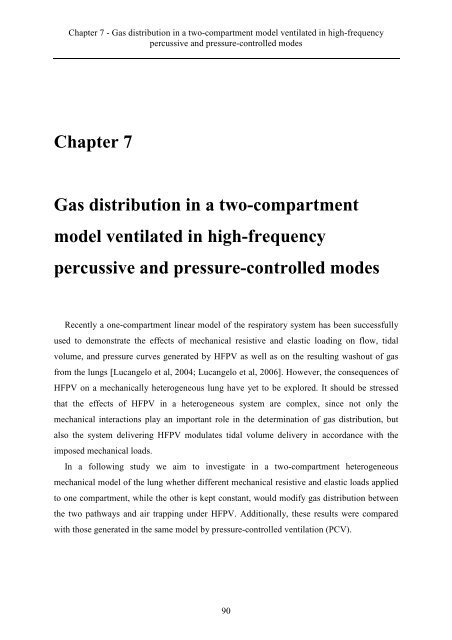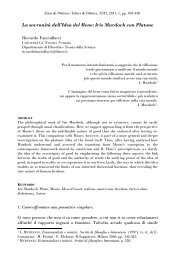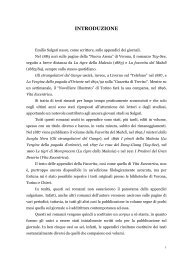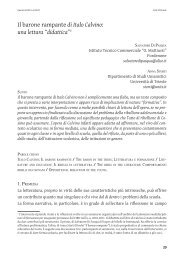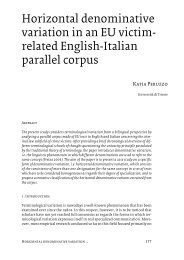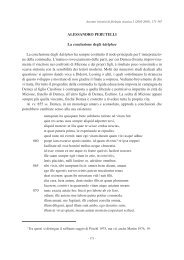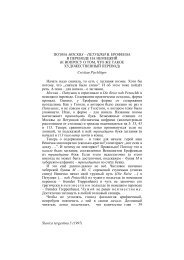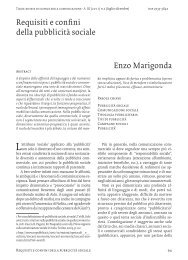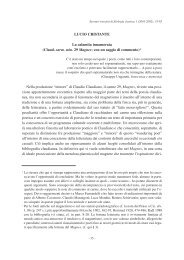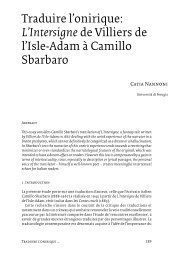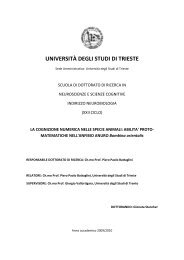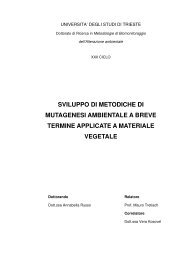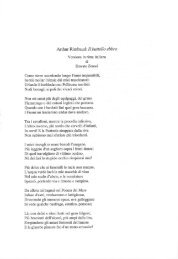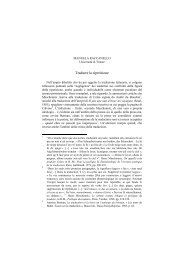UNIVERSITÀ DEGLI STUDI DI TRIESTE - OpenstarTs - Università ...
UNIVERSITÀ DEGLI STUDI DI TRIESTE - OpenstarTs - Università ...
UNIVERSITÀ DEGLI STUDI DI TRIESTE - OpenstarTs - Università ...
Create successful ePaper yourself
Turn your PDF publications into a flip-book with our unique Google optimized e-Paper software.
Chapter 7 - Gas distribution in a two-compartment model ventilated in high-frequency<br />
percussive and pressure-controlled modes<br />
Chapter 7<br />
Gas distribution in a two-compartment<br />
model ventilated in high-frequency<br />
percussive and pressure-controlled modes<br />
Recently a one-compartment linear model of the respiratory system has been successfully<br />
used to demonstrate the effects of mechanical resistive and elastic loading on flow, tidal<br />
volume, and pressure curves generated by HFPV as well as on the resulting washout of gas<br />
from the lungs [Lucangelo et al, 2004; Lucangelo et al, 2006]. However, the consequences of<br />
HFPV on a mechanically heterogeneous lung have yet to be explored. It should be stressed<br />
that the effects of HFPV in a heterogeneous system are complex, since not only the<br />
mechanical interactions play an important role in the determination of gas distribution, but<br />
also the system delivering HFPV modulates tidal volume delivery in accordance with the<br />
imposed mechanical loads.<br />
In a following study we aim to investigate in a two-compartment heterogeneous<br />
mechanical model of the lung whether different mechanical resistive and elastic loads applied<br />
to one compartment, while the other is kept constant, would modify gas distribution between<br />
the two pathways and air trapping under HFPV. Additionally, these results were compared<br />
with those generated in the same model by pressure-controlled ventilation (PCV).<br />
90


